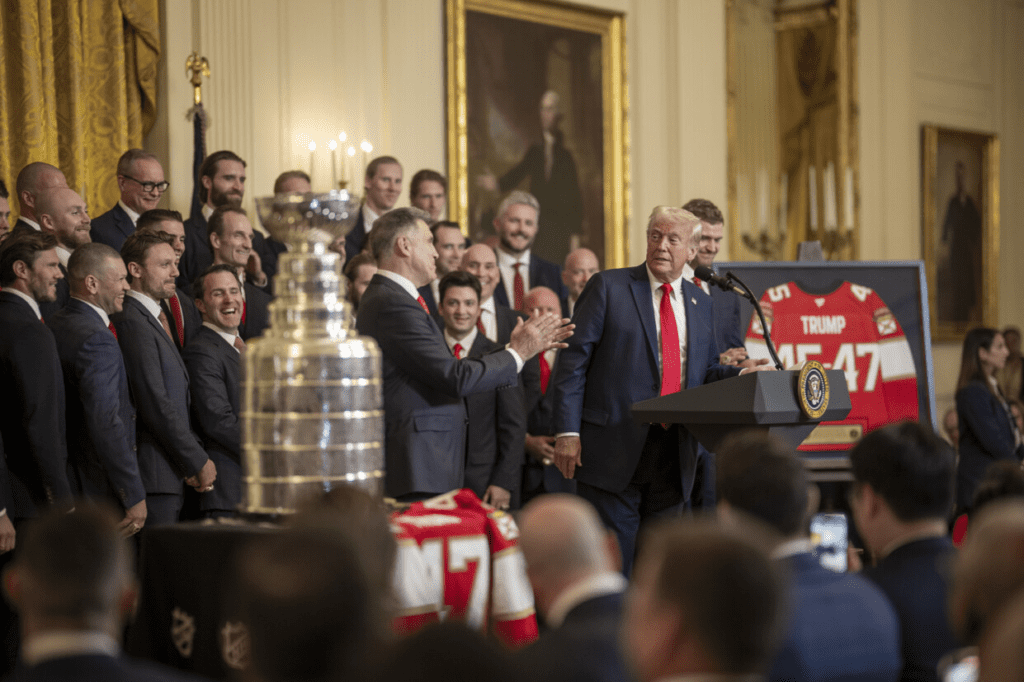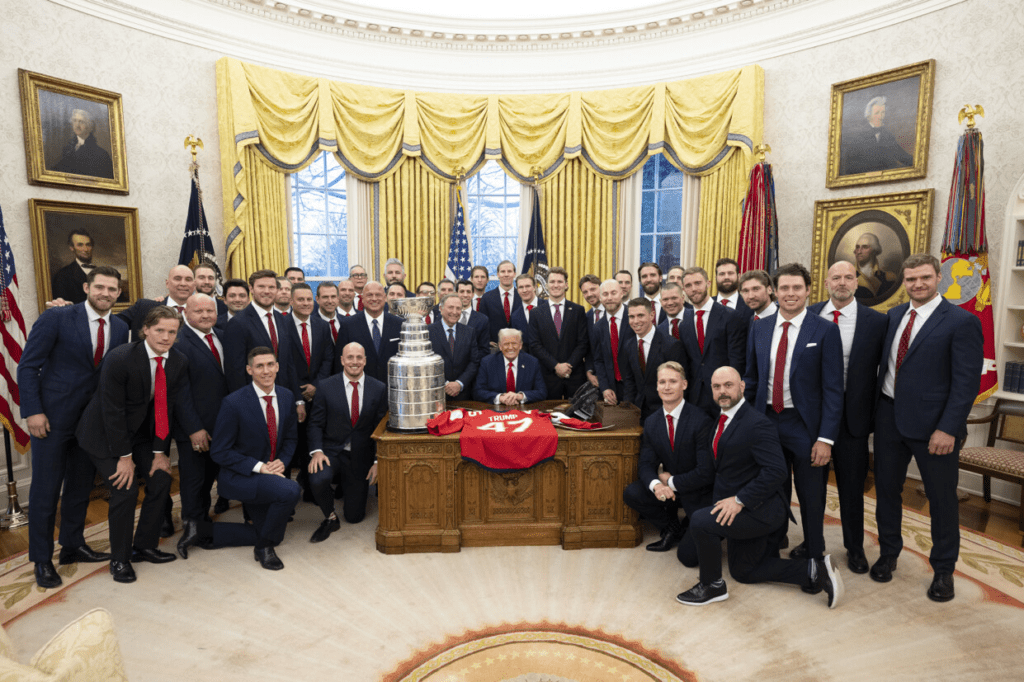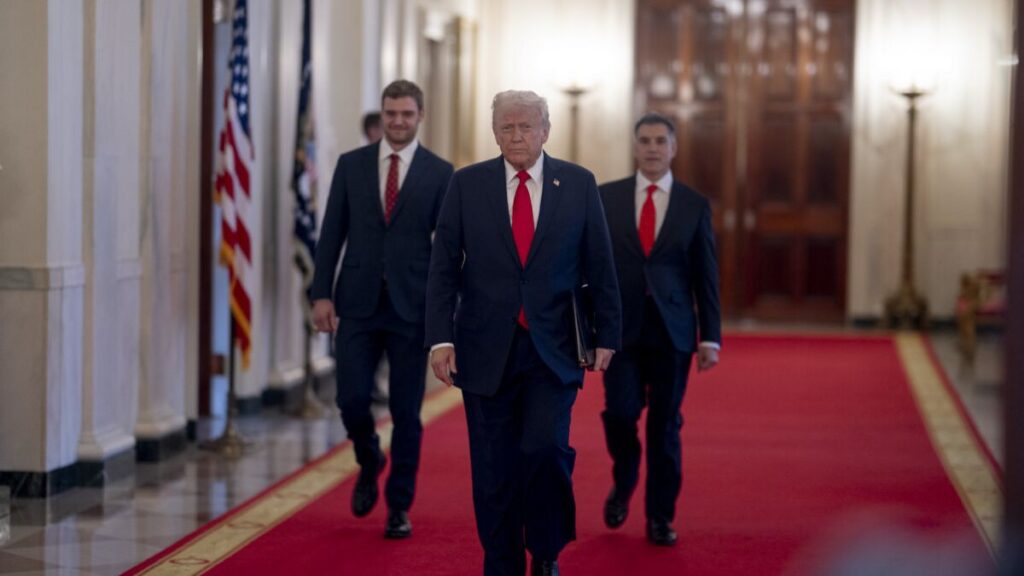When President Donald Trump speaks of his economic and foreign policy objectives, there is often a certain level of ambiguity involved. His administration has been particularly vocal about leveraging tariffs as a tool of negotiation. This approach has been especially evident in his dealings with Canada and Mexico. Over the years, Trump’s stance on both countries has fluctuated, with tariff threats hanging over the diplomatic landscape as a means to extract concessions. However, the specifics of what Trump truly wants from these neighbors have often remained unclear, allowing him to manipulate the situation to his advantage.
The purpose of this analysis is to delve into the complexities of Trump’s strategy towards Canada and Mexico, examining the demands he has made, the concessions he has secured (if any), and the ambiguous nature of his approach that allows him to declare victory at will. Through the lens of economic tariffs, border control, and the fight against drug trafficking, we will unpack what Trump really seeks from these two countries and how his tactics reflect broader political goals.
The Role of Tariffs in Trump’s Foreign Policy

Tariffs have become one of Donald Trump’s most prominent tools in shaping international relations. During his presidency, he used tariffs as a blunt instrument to force countries into compliance with his demands. Whether it was China, the European Union, or North American neighbors, tariffs were often presented as a response to perceived unfair trade practices or non-compliance with U.S. interests.
In the case of Canada and Mexico, Trump’s use of tariffs seemed to align with his broader vision of reducing the U.S. trade deficit, increasing border security, and tackling the flow of illegal drugs, particularly fentanyl. His ability to manipulate the threat of tariffs allowed him to create a sense of urgency in negotiations, positioning himself as a tough negotiator who would not hesitate to impose financial penalties if his conditions were not met.
However, tariffs as a tool of negotiation raise the question: What exactly does Trump want from Canada and Mexico? Is it truly about trade imbalances, security concerns, or something else entirely? Understanding the subtleties of Trump’s demands requires a deeper exploration of the issues at hand.
The Border Crisis and Immigration: A Key Point of Leverage

One of the most consistent themes in Trump’s rhetoric about Canada and Mexico has been border security. His administration frequently referenced the need to curtail the flow of migrants, especially from Mexico, into the United States. The issue of immigration, particularly illegal immigration, has been a central focus of Trump’s foreign policy toward both countries.
Trump’s demands have been quite clear when it comes to immigration: he wants Canada and Mexico to take more responsibility for securing their borders and preventing migrants from entering the U.S. He has used tariffs as a bargaining chip to force these nations to take stronger action, including increased border security and enforcement measures. For example, Trump’s threats led to Mexico agreeing to deploy 10,000 members of its National Guard to reinforce border security, even though the country had already been ramping up its enforcement before the tariff threats were made.
In Canada, Trump has insisted on reducing the flow of migrants at the northern border. While the flow of illegal crossings at the U.S.-Canada border is relatively small compared to the southern border, it remains an issue for the Trump administration, particularly in the context of a broader crackdown on illegal immigration. The President’s demand for Canada to appoint a “fentanyl czar” and take a more active role in combating organized crime and human trafficking were presented as part of the solution.
However, it remains unclear exactly what success would look like for Trump in terms of border enforcement. He often uses vague language, leaving room for him to declare victory whenever he sees fit. The uncertainty surrounding the specific goals and benchmarks makes it difficult for Canada and Mexico to understand what is required of them, allowing Trump to maintain leverage in the negotiation.
The Fentanyl Crisis: Another Front in the Negotiations
Alongside immigration, another critical issue driving Trump’s demands from Canada and Mexico has been the opioid crisis, particularly the influx of fentanyl into the United States. Fentanyl, a potent synthetic opioid, has been responsible for a significant portion of the overdose deaths in the U.S. in recent years. Trump has been adamant that both Canada and Mexico need to do more to combat the flow of fentanyl, as well as the associated criminal organizations that facilitate its trafficking.
In his discussions with both countries, Trump has repeatedly referenced the need for stronger action on drug enforcement. For Canada, his demand for the appointment of a “fentanyl czar” was a significant part of his negotiations. Trudeau, however, pointed out that Canada was already taking substantial steps to combat the opioid crisis, including investments in border security, drug interdiction efforts, and harm reduction initiatives. Despite this, Trump remained unsatisfied, pushing for additional measures to be taken.
Mexico, similarly, had already been taking steps to address the fentanyl issue, particularly in the context of broader anti-drug efforts. Yet, Trump’s insistence on further cooperation from Mexico is consistent with his broader strategy of exerting pressure through tariffs to achieve his desired outcomes. While there have been some signs of progress in drug interdiction efforts in Mexico, the extent to which these efforts align with Trump’s specific demands remains open to interpretation.
The Tariff Threat: A Tool for Uncertainty and Leverage

The most striking feature of Trump’s approach to Canada and Mexico is the ambiguity that surrounds his demands. While his administration has publicly stated its goals, such as reducing trade deficits and securing stronger border controls, the specific requirements are often vague and undefined. This lack of clarity allows Trump to maintain a high level of control over the negotiations, as he can shift the goalposts at will and claim victory when he feels it is politically advantageous.
The imposition of tariffs, or the threat of tariffs, is often presented as a temporary measure. Trump has used this uncertainty to extract concessions from both Canada and Mexico, only to then postpone or suspend tariffs once he feels that enough progress has been made. The recent 30-day delay on tariffs for Canada and Mexico serves as an example of how the tariff threat is used to create an environment of tension, which can then be resolved through negotiated concessions.
Trump’s rhetoric and negotiating style often prioritize short-term victories that can be framed as significant achievements. By framing his demands in general terms, Trump allows himself the flexibility to declare success without providing clear benchmarks for what success would actually entail. This gives him the ability to shape the narrative surrounding U.S.-Canada and U.S.-Mexico relations according to his preferences.
Political Benefits and Domestic Messaging
Trump’s approach to Canada and Mexico also serves a key domestic political function. The use of tariffs and the publicizing of his tough stance on border security and fentanyl trafficking resonate with his base, particularly among voters who feel that previous administrations have been too lenient on immigration and drug-related issues.
The imposition of tariffs and the resulting diplomatic tension also provide Trump with a platform to frame himself as a strong leader who is willing to take bold action to protect American interests. The symbolism of standing up to Canada and Mexico plays well in the context of Trump’s broader “America First” agenda, which focuses on protecting American workers, securing borders, and reducing foreign influence.
For Mexico, the situation is more complex. While President Claudia Sheinbaum of Mexico has sought to push back against Trump’s demands, she also benefits politically from the negotiations. By agreeing to some of Trump’s border security measures, she can demonstrate that Mexico is taking a proactive role in addressing the concerns of the U.S., even as she maintains Mexico’s sovereignty in the face of external pressure. The diplomatic back-and-forth allows both Trump and Sheinbaum to play to their respective domestic audiences, framing the negotiations in a way that benefits their political standing.
A Strategy of Ambiguity and Flexibility
Ultimately, what Trump wants from Canada and Mexico is a mixture of trade concessions, stronger border enforcement, and cooperation on drug trafficking—though the specifics remain intentionally vague. This ambiguity is not a flaw in his strategy but rather a core element of it. By leaving his demands undefined, Trump keeps both Canada and Mexico in a state of uncertainty, allowing him to extract concessions without being tied to specific outcomes.
The threat of tariffs serves as a powerful tool for Trump to achieve his diplomatic goals, but it also reflects a broader approach that prioritizes short-term political gains over long-term solutions. For both Canada and Mexico, the ongoing negotiations with the United States are marked by a sense of unpredictability, with Trump using the leverage of tariffs to keep both countries on edge while maintaining the flexibility to declare victory at any time.
In the end, Trump’s strategy towards Canada and Mexico reveals much about his broader approach to international relations—one that is transactional, focused on immediate outcomes, and driven by the desire to shape the narrative around his presidency. Whether this strategy ultimately achieves lasting results remains to be seen, but it certainly underscores the importance of tariffs, trade imbalances, and border security in his approach to foreign policy.
Read More: China Hits U.S. Where It Hurts: Fresh Tariffs and Export Controls







